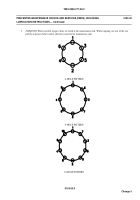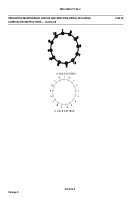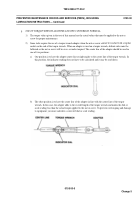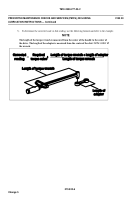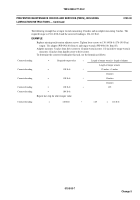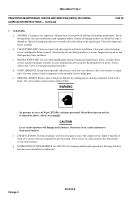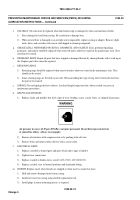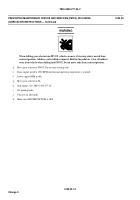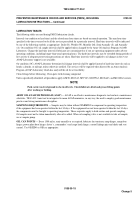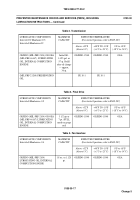TM-9-2350-277-20-2 - Page 33 of 783
TM 9-2350-277-20-2
PREVENTIVE MAINTENANCE CHECKS AND SERVICES (PMCS), INCLUDING
LUBRICATION INSTRUCTIONS — Continued
0155 00
4)
Install setscrews in hull armor mounting screw holes, as required.
5.
FLUID LEAKS AND CHECKING FOR LEAKS
a.
GENERAL.
Fluid leaks in hoses and fluid lines affect the carrier parts operation. The types and classes of leaks
are given below.
CLASS I
Fluid Seepage is not great enough to form drops, but it is shown
by wetness or color changes.
CLASS II
Fluid Leakage is great enough to form drops, but drops do not drip
from the item being checked or inspected.
CLASS III
Fluid Leakage is great enough to form drops that fall from the
item being checked or inspected
NOTE
You are allowed to operate equipment with minor water or oil leaks (Class I or II). You must
consider how much fluid the item or system being checked or inspected can hold. When
in doubt, notify your supervisor. Any fuel or Class III leaks will make the vehicle NOT
READY/AVAILABLE.
b.
CHECKING FOR LEAKS AFTER A MAINTENANCE TASK.
After doing maintenance on a part which involves
hoses or fluid lines, check for leaks. If leaks occur after you have done a replace or repair task, find the source of
the leak. Correct the problem. Follow these procedures.
1)
Do visual inspections to find the source of the leak.
a)
Check for cracks on housing or cover.
b)
Check that screws and any connections are not loose or overtight.
2)
If you cannot see the source of the leak, check the items listed below.
a)
Check that preformed gasket is not bent, or pinched.
b)
Check machined surfaces for fit and cleanliness.
c)
If leak persists, notify supervisor.
c.
CHECKING FOR LEAKS USING CHALK TEST.
Following replacement, repair, or adjustment of a ramp, door,
hatch cover, access panel, or rubber seal, check for leaks by performing a chalk test. Use the following procedure:
1)
Use chalk or chalk powder to coat area around seal.
2)
Close ramp, door, hatch cover, or panel.
3)
Open ramp, door, hatch cover, or panel.
4)
Check for unbroken chalk line on mating surface. Where chalk does not stick to mating surface, there is a
leak in the seal surface.
5)
If a leak is found, perform adjustment to correct the problem.
6.
WARM-UP ENGINE
To warm up the engine for a maintenance or troubleshooting task, do the following:
a.
Cover air inlet grill.
b.
Start engine. See TM 9-2350-277-10.
c.
Release parking brake and apply service brake.
0155 00-13
Change 5
Back to Top

